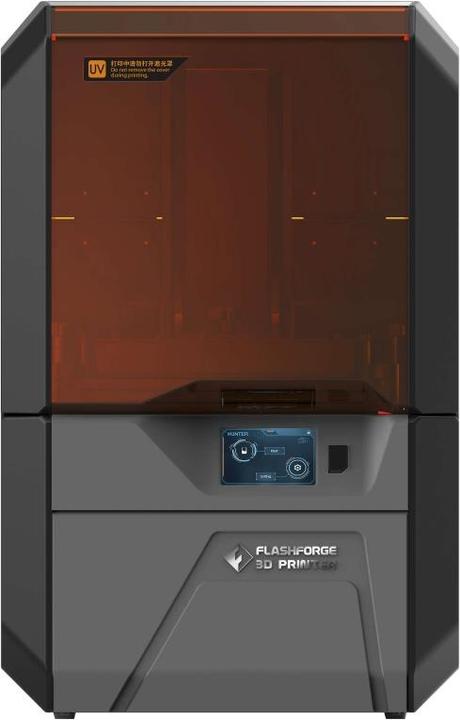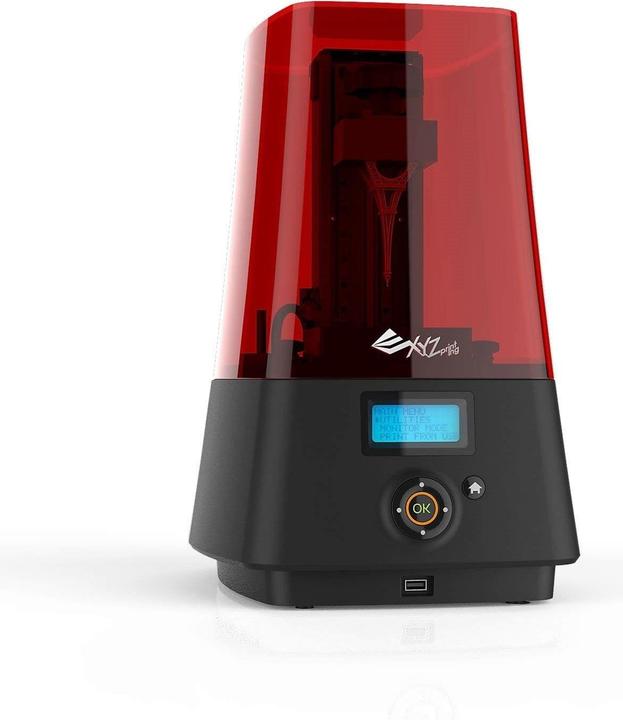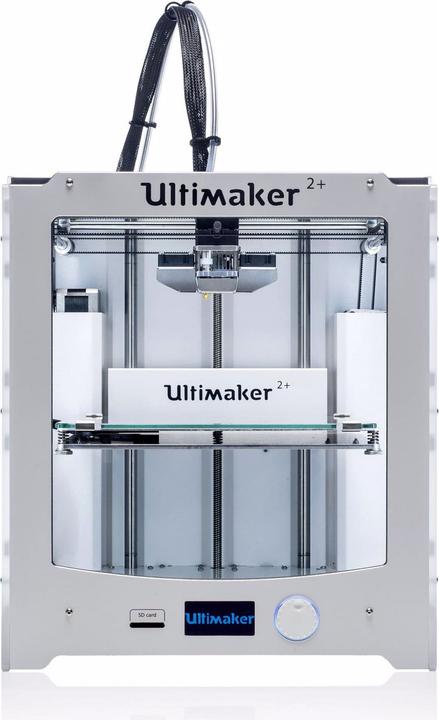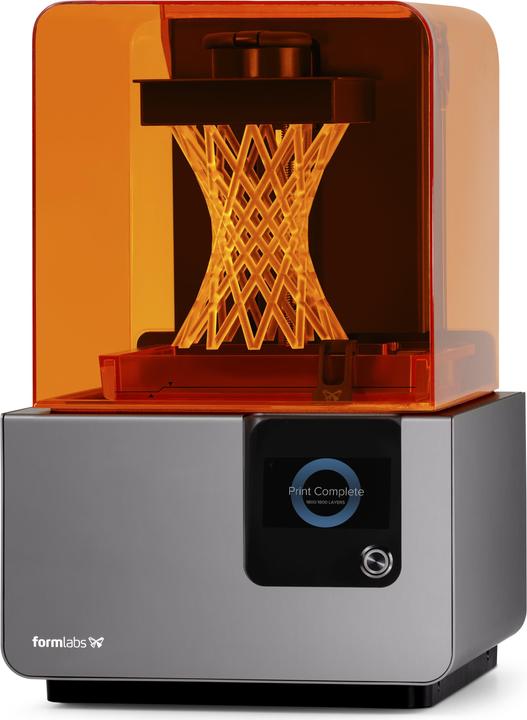
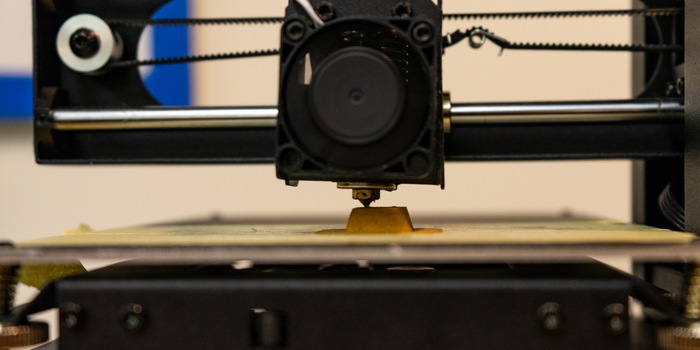
An overview of the most common 3D printing technologies
Most 3D printers that you can buy as a private individual today are based on fused filament fabrication technology. However, this is by no means the only standard.
The year is 1966 and there is a strange new series on television in which the main characters are running around in pyjamas. Star Trek conquers the living rooms in the USA. In addition to aliens and the romantic escapades of Captain James Tiberius Kirk, viewers see a strange machine that the crew of the Enterprise uses to synthesise food, clothing and spare parts. The idea of 3D printing is thus imprinted on the collective memory.
However, it was almost twenty years before the first 3D printing patent was registered. In 1984, Chuck Hull submitted a patent application for stereolithography, which was approved in 1986. 3D printing was born. As a result, more and more additive manufacturing technologies are developed. The term additive manufacturing, or AM for short, is also frequently used. I will introduce you to three of these technologies in more detail below.
Stereolithography (SLA)
Stereolithography (SLA) is considered the first 3D printing process. SLA is a laser-based process that employs photopolymer resins. 3D data is fed into the printer. A UV laser beam is then aligned on the X and Y axes over the surface of the resin, causing the resin to harden exactly where the laser hits the surface. The printer does this layer by layer on the Z-axis.
When an SLA part is finished, it is placed in a solvent. This removes any wet resin that remains on the surface of the part or has been printed as a support structure. It is then placed in a UV oven to cure and finalise the printing process.
The thinnest layer thickness of an SLA component is typically 0.05 mm. This technology offers the smoothest surface finish of any additive manufacturing process. Considering the level of quality that SLA can achieve, it is particularly useful for creating high-precision 3D printed models, from small to large, quickly and cost-effectively.
The mechanical properties of SLA materials are wide-ranging and offer a variety of applications. In particular, parts that require ABS or polypropylene-like properties can be printed very well using the SLA process.
Common SLA materials include:
- Standard resin: Ideal for prototypes with a detailed surface finish
- Technical resin: Ideal for high-temperature applications
- Castable resin: Ideal for investment casting applications
- Dental resin: Highly durable and precise for dental applications
Digital light processing
DLP (Digital Light Processing) is a similar process to stereolithography. It also employs photopolymers. The main difference lies in the light source. DLP uses a more conventional light source - like a darkroom light
-which is applied to the entire surface of the photopolymer resin tank in a single pass. This makes the printing process faster SLA.
In this process, once the 3D model is sent to the printer, a vat of liquid polymer is exposed to light from a DLP projector. The DLP projector displays the image of the 3D model on the liquid polymer. The exposed liquid polymer hardens and the build plate moves downwards. The next layer of liquid polymer is exposed to light again. The process is repeated until the 3D model is complete and the container is emptied.
Like the SLA printing process, DLP also requires support structures for some parts, especially those with overhangs or undercuts. These structures must be removed manually. The 3D objects must be cleaned and cured in post-processing. During curing, the part is exposed to intense light in an oven-like machine to fully cure the resin.
Fused deposition modelling and fused filament fabrication
3D printing, in which thermoplastic material is extruded, is by far the most common and best-known 3D printing process. The best-known name for the process is fused deposition modelling (FDM). You may have wondered what the difference is between FDM and Fused Filament Fabrication (FFF). The short answer: there is none. The long answer: The company Stratasys, which has several patents on the process, registered the term FDM back in 1991. The members of the RepRap project developed the term FFF as an alternative to the term FDM.
Thanks to FFF, 3D printing became accessible to the average consumer. As a result, you will also find the most FFF printers in digitec's range. This is mainly due to the RepRap project. RepRap stands for Replicating Rapid rototyper. This refers to a self-reproducing machine. The aim is to use 3D printers to produce other 3D printers. The best-known model is the Prusa i3. The plans for this are freely available and you can build it yourself. I don't know about you, but I definitely want to give it a try.
The process works by melting plastic filaments. The printer applies these to a build platform according to the 3D data provided to the printer. Each layer hardens as it is pressed on and bonds with the previous layer. The FDM/FFF processes require support structures for certain overhanging models.
The great advantage of FFF is the durability of the materials, the stability of their mechanical properties over time and the quality of the parts. The thermoplastics used in FDM are suitable for detailed functional prototypes, durable production tools and small series parts. In contrast to SLA and DLP printing processes, however, the layers are usually at least 0.1 mm thicker and therefore not as precise.
Other advantages of FFF:
- Wide range of materials, including many common thermoplastics, wood and metal-fused thermoplastics and even food (such as chocolate)
- The most cost-effective printer technology
- The most favourable printing materials
- Easy to change materials
- It is possible to print with different materials
- Relatively easy to build your own printer
- Fast printing
The biggest disadvantages of FFF are the following:
- The details of the finished prints are limited by the size of the nozzle. Other technologies offer more accurate details
- The strength of finished parts is limited as each layer is bonded to the layer below
Plastic Jet Printing or PJP is another 3D printing technology that uses heat and pressure to continuously extrude plastic. However, unlike FFF, thermoplastics are the only material used in PJP 3D printing.
Hier geht's zu allen FFF-Druckern.
From big data to big brother, Cyborgs to Sci-Fi. All aspects of technology and society fascinate me.
Practical solutions for everyday problems with technology, household hacks and much more.
Show all
